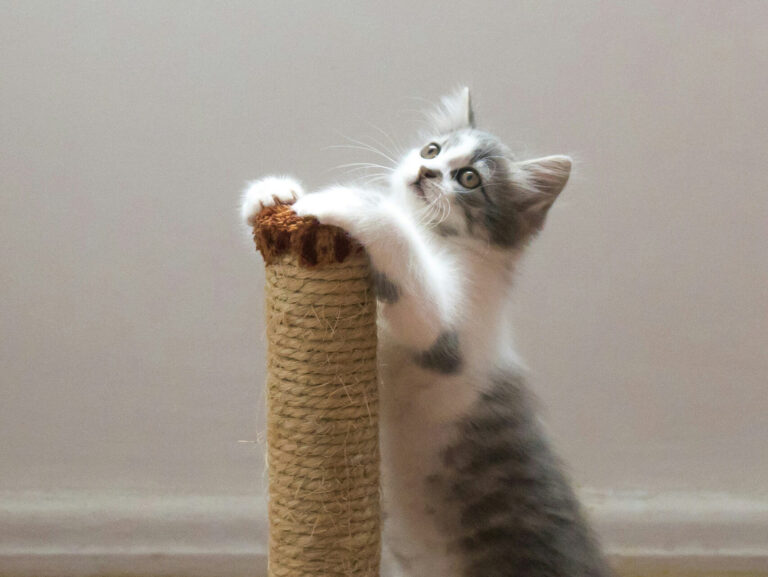Cats scratch for a number of reasons:
- To mark their territory by leaving both a visual mark and a scent – they have scent glands on their paws.
- To stretch their bodies and flex their feet and claws.
- To work off energy.
- To reduce stress.
- To remove the dead outer layer of their claws.
Scratching is a normal and pleasurable behavior and all cats should be provided the opportunity to scratch.
- Provide a variety of scratching posts – different surfaces (sisal, carpet, cardboard are often preferred) and different angles (horizontal, vertical, sloped). Some cats like to stretch up when they scratch, others like something on the floor, etc. For vertical scratchers, taller is better – the cat should be able to stand on their hind legs and fully extend their front legs against the post.
- Make the scratching post more appealing by putting catnip on it.
- If your cat enjoys praise and attention, be sure to notice when they are scratching in the right place and reward them. You can even deliver a tasty treat right at the post when they are finished scratching.
- Place scratching posts in socially significant areas of the home such as your bedroom or near the front door.
Unwanted Scratching
- If your cat is scratching something that you don’t want them to scratch, notice the features of that item and try to mimic them (e.g. if they are standing on the floor and stretching up to scratch the side of a couch, you might want to provide a tall post. If they are scratching carpet on the floor, a flat scratcher that they can stand on may be a good choice).
- If your cat is scratching a piece of furniture or something that you don’t want them to scratch, place a post very close to that area (blocking scratching access to the unwanted spot, if possible).
- Make the unwanted scratching location less appealing by covering it with something the cat won’t want to scratch (like double-sided tape).
- Make the scratching post more appealing by putting catnip on it. You can also “pre-scratch” it with a fork.
- If your cat enjoys praise and attention, be sure to notice when they are scratching in the right place and reward them. You can even deliver a tasty treat right at the post when they are finished scratching.
- Do not punish your cat for scratching, including clapping or making a loud noise, or spraying them with a water bottle. They may become frightened of you if you do this, and they’ll likely still scratch the unwanted area—just not when you are there to catch them!
- The best thing to do when you see your cat scratching on the wrong thing is IGNORE them! Giving them any attention (even saying “no!”) may reinforce the behavior as a way to get attention.
- Clip their nails to reduce the need to scratch but be aware that cats use scratching as a “marking” behavior so will still need to scratch (even a declawed cat will still go through the motions of “scratching”).
- If cats are scratching due to boredom, increasing their environmental enrichment and play time can help.

